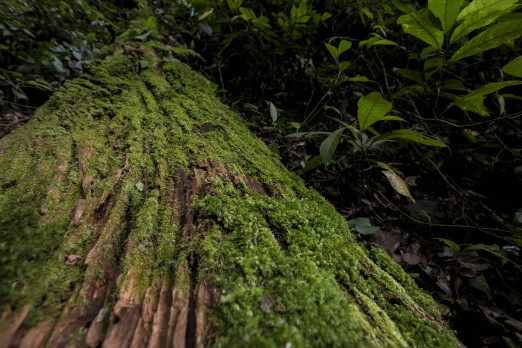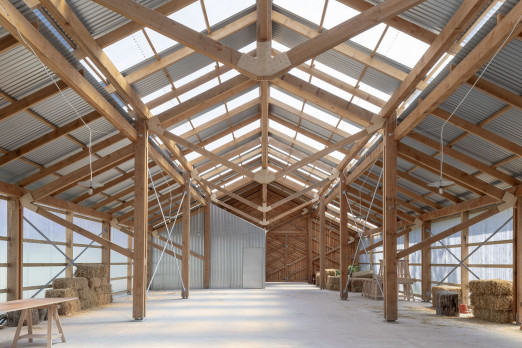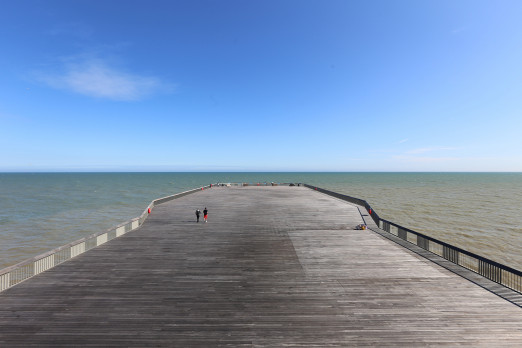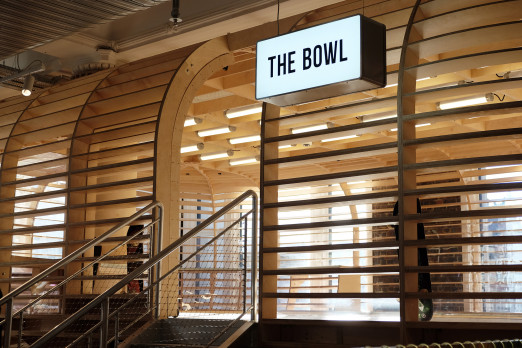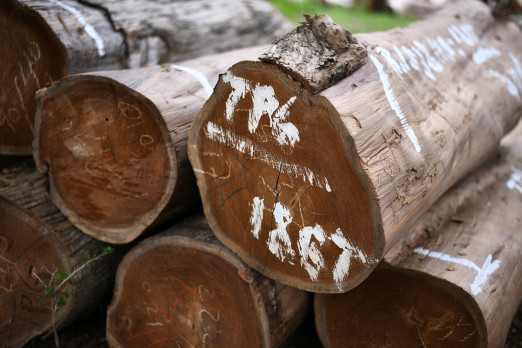As we work towards a low carbon future and learn of trees’ ability to sequester carbon – even after being felled and converted into timber products – the popularity of wood as a design and construction material can only grow.
The challenge remains in ensuring that the increasing popularity of timber is accompanied by sustainable logging practices. Take for example, The Tokyo Organising Committee of the Olympic and Paralympic Games’ initiative to deliver sustainable 2020 Games. Their endeavour was questioned when accusations ensued that the tropical plywood sourced to build some of its Olympic facilities – including the Kengo Kuma-designed National Stadium – was linked to illegal logging and deforestation in Malaysia and Indonesia. Despite the Sustainable Sourcing Code put into place, concerns regarding the lack of traceability of the timber and due diligence carried-out were raised. It begs the question – How can we guarantee that the timber we use in our projects is sustainably sourced?
Greater transparency in the forest sector is a vital component to sustainable forest management and procurement of timber. The FLEGT Action Plan is one of many international instruments designed to achieve these goals, by mandating that timber entering the EU market has been logged legally. As part of our Conversations about Climate Change design competition and event series in association with the Timber Trade Federation, this short introduction aims to bring clarity to what FLEGT is and how it works.
An EU action plan
The EU FLEGT Action Plan was initiated in 2003 as a measure for EU member states to tackle the illegal logging of tropical timber.
FLEGT stands for Forest Law Enforcement Governance and Trade as it takes a ‘legal’ and ‘trade’ standpoint to achieve better forest governance.
A supply-demand approach
Illegal logging accounts for up to 30% of the global timber trade.
As one of the largest consumers of timber products, the EU has the potential to reduce the profitability of illegal timber and eliminate markets and trade of its products. To best achieve this, the EU FLEGT Action Plan is centred around three key pillars:
- Preventing import of illegal timber into the EU
- Improving supply of legal timber
- Increasing demand for timber from responsibly managed forests
These three themes are further elaborated into seven measures (Figure 1), which in unison are designed as a multifaceted and exhaustive approach to achieve FLEGT’s ambition of eliminating the trade of illegal timber.
More information on the seven FLEGT Action Plan measures
How does it work?
The FLEGT Action Plan uses two trade policy tools:
EU Timber Regulation (EUTR) – A legislation that reduces the import of illegally harvested timber into the EU market. It places responsibility on EU traders to ensure that the timber products are sourced legally. (Prevent import of illegal timber, increase demand for legal timber).
Voluntary Partnership Agreements (VPA) – A voluntary agreement between the EU and timber-producing countries to corroborate the legal sourcing of timber exported to the EU. VPA countries are incentivised to obtain a FLEGT license, as this provides them access to a 'green lane' for timber exports into the EU market, thus bypassing the EUTR processes. (Improve supply and increase demand of legal timber).
More information on EUTR and VPAs
Achieving a FLEGT license. How do VPAs work?
Negotiation phase – VPAs are negotiated on a country-by-country basis. The EU works with the timber-producing country to establish a definition of what constitutes ‘legal timber’. It also draws up agreements on how compliance will be monitored and verified. The output of this process is the Timber Legality Assurance System (TLAS) – the backbone of VPAs.
This is a multi-stakeholder process which involves the government, private sector and civil society, to attempt at achieving a country-wide consensus on the national legality standards, regulations and forest rights.
Ratification phase – Although entering a VPA is voluntary, VPAs can be formalised and become legally binding.
Implementation phase – Once the VPA is granted, the timber-producing country becomes a VPA partner. VPA partners then start to apply forest governance reforms and the TLAS.
FLEGT licensing – Once the TLAS has been implemented and verified by an independent auditor, FLEGT licenses are issued.
A focus on tropical forests
The FLEGT Action Plan is centred on tackling illegal logging of tropical forests.
As of 2020, there are currently 15 countries undergoing the EU’s FLEGT Action Plan. However, these participant nations cumulatively account for 80% of the global tropical timber trade. Furthermore 2017, the EU imported €3.78 billions of wood products from these countries.
| Negotiating | Implementing | Licensing |
At the point of writing this article, Indonesia is the only country to have issued FLEGT licenses for its timber products. However, Ghana has progressed along the VPA implementation stage and is expected to be next in line.
The FLEGT license
- FLEGT licensed timber is certified to have been produced and sourced in a way that meets the laws and regulations outlined in the exporting country’s VPA with the EU.
- FLEGT timber by default meets the EUTR requirements and can therefore enter the EU market without the need for additional import due diligence.
- Once a FLEGT license is issued, the VPA partner commits to exporting only FLEGT licensed timber into the EU.
- Likewise, EU member states and consumers must import only FLEGT licensed timber from the corresponding VPA partner.
More information on the FLEGT license
For more information about FLEGT and the illustrations used in this article, please visit the EU FLEGT website.
Join the Climate Change Conversation and enter the design competition here.
Conversations about Climate Change is a partnership between the Building Centre and the Timber Trade Federation. Supported by the Foreign, Commonwealth & Development Office.










